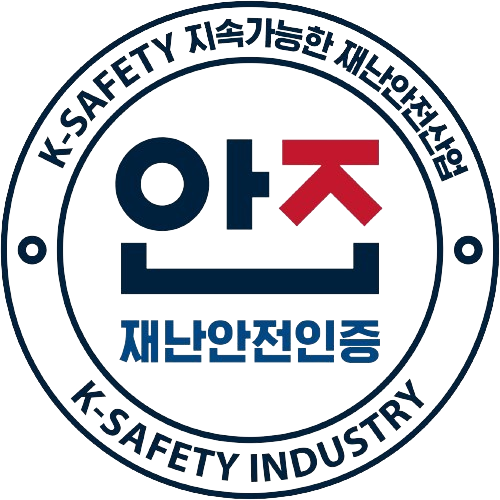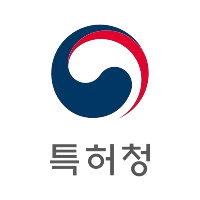The 10 Most Terrifying Things About Cerebral Palsy Attorneys
페이지 정보

본문
How to Make a Successful Cerebral Palsy Claim
A diagnosis of cerebral paralysis can have a profound impact on the life of the child and the lives of their family. Compensation can allow them to live a full and fulfilling life, with access to equipment, care and assistance.
Many cases of cerebral palsy are the result of medical negligence. This can be caused by the lack of medical attention prior to pregnancy, problems during labor and birth or other occurrences.
Causes
There is no cure for CP, but early diagnosis and treatment can help improve the abilities of a child. Doctors diagnose CP based on a child's movement, muscle coordination and tone. They can refer children to specialists such as neurologists, orthopedists for children and physiatrists who can help manage symptoms and improve the quality of life.
Every person is affected by cerebral palsy differently. It can be mild and have little impact on the abilities of a child however, it can also be severe and cause impairments across every body part. The symptoms can include a floppy head (floppy neck), muscles that are stiff and uncontrolled and walking difficulties, or problems with speech and other functions. If a child is diagnosed with cerebral palsy on one side of the body, this is known as hemiplegia. If it occurs on both sides, it's diplegia. In severe cases, CP could result in a locked-in (spastic) condition, characterized by muscle spasticity. This may limit the ability of a person to move and can create difficulties with speech and eating.
The occurrence of medical errors during childbirth is a leading cause of CP. Midwives, doctors and nurses must be cautious when delivering babies as brain damage could have serious consequences. If a medical mistake causes oxygen deprivation or other brain damage that causes cerebral palsy, the doctor could be held accountable for negligence. This includes negligence in scheduling or performing an urgent C-section, or failing to monitor and escalate a complex labor.
Signs and symptoms
If your child has cerebral palsy, he / she will likely have a combination of physical symptoms. The symptoms can include stiff or tight muscles, a limp, uncontrolled movements, as well as issues with posture and balance. Other problems include speech delays, intellectual disabilities and hearing and vision problems.
The symptoms of cerebral palsy result from damage to the brain's maturation. It usually occurs during infancy or the early years of childhood. A slowing down in reaching milestones such as sitting up, crawling or walking is a typical symptom of CP. Children with CP may also have difficulties swallowing, and may need a feeding device.
Numerous factors can contribute to the development of a brain injury that triggers CP that can be caused by infections such as rubella, cytomegalovirus or toxoplasmosis in the womb and high blood pressure in pregnancy and genetic predisposition. Asphyxia (a serious lack of oxygen) during delivery or labor is a leading cause of CP.
Based on the kind of cerebral palsy, symptoms may range from mild to severe. Spastic cerebral palsy attorneys palsy (characterized by stiff muscles) is the most prevalent type. Dyskinetic cerebral palsy (also called athetoid or choreoathetoid) is characterized by slow, uncontrolled motions of the arms, legs and the body. Other types of CP could include ataxic cerebral palsy, which has a shaky motion, or paraplegic cerebral palsy in which the legs and arms are affected.
Treatment
While the specific symptoms of cerebral palsy vary, most sufferers of the condition have to cope with stiffness and loss of muscle control. They may also be struggling with coordination and balance. The kind of problems they experience is dependent on the part of the brain that was injured and the extent of the injury.
Many people with CP require special physical therapy that can improve their mobility, muscle tone, and stretch their joints and muscles. It can also ease the discomfort and prevent contractures. Braces, exercises, or other treatments can be considered.
Musculoskeletal conditions like patella alta, hip dysplasia, cervical stenosis, scoliosis are prevalent in CP. These conditions can cause major mobility problems, which reduces life expectancy.
Other treatments may include speech and language therapies for children who are unable to communicate effectively. This may help them learn new ways of communicating and could include sign language, communication boards or voice synthesizers.
These medicines are used to limit abnormal movements, reduce seizures, and ease pain. These medications can be administered orally, or directly injected into the muscles affected, or into the fluid around your spinal cord.
Compensation
A successful cerebral palsy claim can result in compensation for your child to pay for medical equipment, specialist care and treatment. The amount will be determined on the physical and mental effects of your child's illness and any expenses or losses you may have suffered. This could include the loss of income due to you having to stop working to care for your children, home modifications and transportation costs.
Depending on the degree of the injury to your child, your lawyer may hire an expert in disability care to develop a "lifecare plan' that carefully details their needs from the time of their diagnosis until they reach adulthood. This can help calculate a more accurate compensation sum. It usually takes the form of a lump sum and recurring annual payments which could be indexed to keep pace with inflation.
It is important to know that the compensation resulting from a successful legal claim isn't a windfall. It is a recognition of wrongdoing that occurred because the medical professional failed to fulfill their duty of care in labour, pregnancy and the delivery.
A diagnosis of cerebral paralysis can have a profound impact on the life of the child and the lives of their family. Compensation can allow them to live a full and fulfilling life, with access to equipment, care and assistance.
Many cases of cerebral palsy are the result of medical negligence. This can be caused by the lack of medical attention prior to pregnancy, problems during labor and birth or other occurrences.
Causes
There is no cure for CP, but early diagnosis and treatment can help improve the abilities of a child. Doctors diagnose CP based on a child's movement, muscle coordination and tone. They can refer children to specialists such as neurologists, orthopedists for children and physiatrists who can help manage symptoms and improve the quality of life.
Every person is affected by cerebral palsy differently. It can be mild and have little impact on the abilities of a child however, it can also be severe and cause impairments across every body part. The symptoms can include a floppy head (floppy neck), muscles that are stiff and uncontrolled and walking difficulties, or problems with speech and other functions. If a child is diagnosed with cerebral palsy on one side of the body, this is known as hemiplegia. If it occurs on both sides, it's diplegia. In severe cases, CP could result in a locked-in (spastic) condition, characterized by muscle spasticity. This may limit the ability of a person to move and can create difficulties with speech and eating.
The occurrence of medical errors during childbirth is a leading cause of CP. Midwives, doctors and nurses must be cautious when delivering babies as brain damage could have serious consequences. If a medical mistake causes oxygen deprivation or other brain damage that causes cerebral palsy, the doctor could be held accountable for negligence. This includes negligence in scheduling or performing an urgent C-section, or failing to monitor and escalate a complex labor.
Signs and symptoms
If your child has cerebral palsy, he / she will likely have a combination of physical symptoms. The symptoms can include stiff or tight muscles, a limp, uncontrolled movements, as well as issues with posture and balance. Other problems include speech delays, intellectual disabilities and hearing and vision problems.
The symptoms of cerebral palsy result from damage to the brain's maturation. It usually occurs during infancy or the early years of childhood. A slowing down in reaching milestones such as sitting up, crawling or walking is a typical symptom of CP. Children with CP may also have difficulties swallowing, and may need a feeding device.
Numerous factors can contribute to the development of a brain injury that triggers CP that can be caused by infections such as rubella, cytomegalovirus or toxoplasmosis in the womb and high blood pressure in pregnancy and genetic predisposition. Asphyxia (a serious lack of oxygen) during delivery or labor is a leading cause of CP.
Based on the kind of cerebral palsy, symptoms may range from mild to severe. Spastic cerebral palsy attorneys palsy (characterized by stiff muscles) is the most prevalent type. Dyskinetic cerebral palsy (also called athetoid or choreoathetoid) is characterized by slow, uncontrolled motions of the arms, legs and the body. Other types of CP could include ataxic cerebral palsy, which has a shaky motion, or paraplegic cerebral palsy in which the legs and arms are affected.
Treatment
While the specific symptoms of cerebral palsy vary, most sufferers of the condition have to cope with stiffness and loss of muscle control. They may also be struggling with coordination and balance. The kind of problems they experience is dependent on the part of the brain that was injured and the extent of the injury.
Many people with CP require special physical therapy that can improve their mobility, muscle tone, and stretch their joints and muscles. It can also ease the discomfort and prevent contractures. Braces, exercises, or other treatments can be considered.
Musculoskeletal conditions like patella alta, hip dysplasia, cervical stenosis, scoliosis are prevalent in CP. These conditions can cause major mobility problems, which reduces life expectancy.
Other treatments may include speech and language therapies for children who are unable to communicate effectively. This may help them learn new ways of communicating and could include sign language, communication boards or voice synthesizers.
These medicines are used to limit abnormal movements, reduce seizures, and ease pain. These medications can be administered orally, or directly injected into the muscles affected, or into the fluid around your spinal cord.
Compensation
A successful cerebral palsy claim can result in compensation for your child to pay for medical equipment, specialist care and treatment. The amount will be determined on the physical and mental effects of your child's illness and any expenses or losses you may have suffered. This could include the loss of income due to you having to stop working to care for your children, home modifications and transportation costs.
Depending on the degree of the injury to your child, your lawyer may hire an expert in disability care to develop a "lifecare plan' that carefully details their needs from the time of their diagnosis until they reach adulthood. This can help calculate a more accurate compensation sum. It usually takes the form of a lump sum and recurring annual payments which could be indexed to keep pace with inflation.
It is important to know that the compensation resulting from a successful legal claim isn't a windfall. It is a recognition of wrongdoing that occurred because the medical professional failed to fulfill their duty of care in labour, pregnancy and the delivery.
- 이전글The Under-Appreciated Benefits Of I Lost My Car Keys Honda 24.06.25
- 다음글5 Killer Quora Answers To Free Casino Slots 24.06.25
댓글목록
등록된 댓글이 없습니다.




